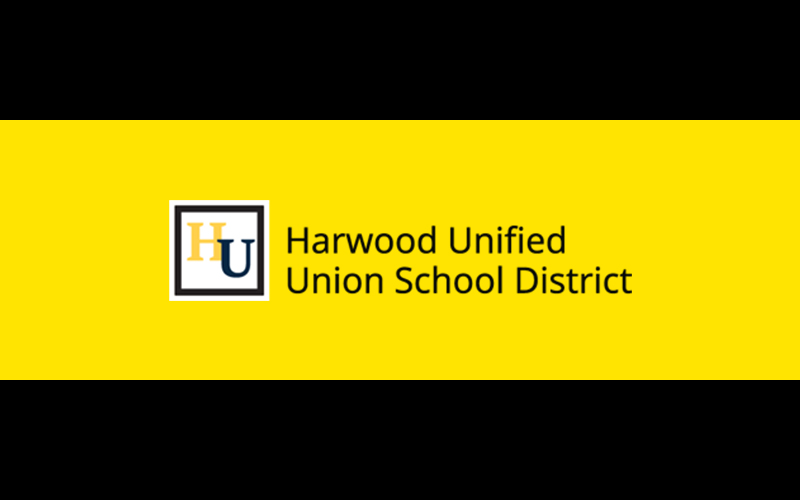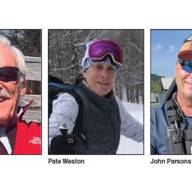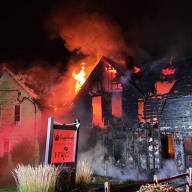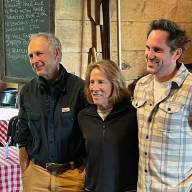Last week, The Valley Reporter ran part of an interview with outgoing Harwood Unified Union School District superintendent Brigid Nease who is leaving the district after 13 years on June 30.
Last week Nease discussed Act 46 and how it developed and matured (or didn’t) in the district among other things.
This week, Nease elaborates further on Act 46 as well as discusses the October 2016 car crash that killed five local students, the COVID-19 pandemic and what’s next for her.
VR: It is probably safe to say that the October 2016 car crash was the low point of your tenure here. People praised your leadership during that awful time. How did you manage that?
Nease teared up at the question and said it is still hard to talk about it. She took a moment to compose herself before answering.
Nease: “The job of a superintendent is making very serious decisions about kids and families on a daily basis. You’re usually dealing with families in crisis, staff in crisis, students in crisis. There’s so much of that. And then something like this horrible, unspeakable event happens and it’s right there and you have to dig really deep into your person, your training, your humanity because it’s you or nobody. This was a life-altering event for every person. It was absolutely a life-altering event for me. Fortunately, I have a rock-solid husband who was able to be my soft place to fall because I had to be Amy and Lisa’s soft place to fall and everybody else’s soft place to fall because if people started to crumble they wouldn’t be able to help the kids and families that were already crumbled.”
(Nease’s husband is Floyd Nease and she was referring to former Harwood principals Lisa Atwood and Amy Rex.)
Nease said people have since told her that one of her strengths is that she’s very good in crisis. She said that loss of life required passion and commitment and a broken heart.
Nease: “I can’t even put it into words it was so life-altering. I just think about five funerals back-to-back, taking our students on a school bus. My husband went with me and sat on the bus to be sure I wouldn’t falter – because I’m human too. The students had to be supported.”
Beyond the emotional pain and shock at school and in the community, there were specific steps that Nease and her team had to take.
Nease: “On day two, I called the governor’s office and said I need to speak to him now. I did speak to him and said this is beyond speakable and we need help. They said you’ll have whatever you need.
“With help from Washington County Mental Health and Brian Carten’s therapy dog, things began to fall in place while the school and community worked through “grief beyond words and what appeared to be complete obliteration.”
Nease: “It was like Humpty Dumpty but unlike the rhyme, it had to be put together again. My husband kept saying one day at a time and the only way out is through. It was like that for two years, actually longer.”
VR: How did that experience shape your response to the COVID-19 pandemic?
Nease: “From making the decision to close right now to going with the four/one model [for remote and in-person learning], it was night and day. It was round the clock. In some unusual way the tragedy with the kids positioned me well with some of the immediate things we did with the pandemic.”
VR: You and your administrative team have received praise from the community for the school district’s COVID response. How did you make that work?
Nease: “One of the biggest successes was the model with which we operated as an administrative team. We have wonderful administrators. They’re highly collaborative. Decision-making is all shared. We were able to quickly mobilize. We had systems in place that we could readjust and use for data collection and we were able to reassign duties. We made three tiers, each had a chair, they had my ear and we triaged it down and made a flow chart. We met as a full administrative team every day from 3 to 5 p.m. at first and then twice a week after school and we just kept hammering it down together and dividing up the work.
“I’m proud of that. One of the things you get to do when you’re a superintendent is you get to say no and you get to push back. In both of those crisis situations, it was really required of me. I’m proud of how we handled the pandemic.”
VR: Are there other noteworthy things you’re proud of?
Nease: “One of my strengths and one I’m very proud of is my community negotiation model. When I came in 2009 I was thrust into some negotiations between the VT-NEA and our district. It was broken as a model and did nothing to build good will and relationships. I developed with the HU union an advisory committee that’s in effect to this day. We negotiated all the contracts from 2009 until the last one when I stepped away because I was leaving. Our union teachers came to the table without their attorney and we didn’t use any attorney and were able to use those mediation and facilitation skills and help people see other’s point of view. It was very successful and extremely cost effective, saving the district $60-$65,000 each time.”
VR: To return to the issue of Act 46 and how fractious it was, we were always astonished that it seemed like not a lot of the community was paying a lot of attention to the board, certainly around the vote on last November’s bond. Obviously, because we were reporting on these issues, we were fully engaged. Why do you think people weren’t paying attention?
Nease: “Agree and my team will say the same thing about when things started to go south after Act 46. It was pretty obvious by 2019 that these waters were really turbulent. Where was everybody? Back when we had the Harwood board, if there was something that was really contentious, we’d have to to go to the auditorium and it would be packed. The difference is that before Act 46 people felt safe and comfortable speaking their mind. After 46 things got off track, what people tell me is that they didn’t feel comfortable coming out in public and speaking their minds. I would think that as a journalist, you’d appreciate that that is deadly when people don’t feel they can speak their mind and respectfully disagree and still care about their neighbors. I never could figure that out, like why weren’t we in the auditorium so many times when things came up?”
VR: Does that suggest that people from Warren were scared to talk in front of people from Duxbury, for example?
Nease: If you’re right, and I think you might be, then why are we all merged together? Because in the absence of figuring it out, the conversation isn’t happening.”
Nease said that a white paper she wrote about potentially closing the Fayston Elementary School and some grades at the Moretown Elementary School was never intended to dictate the future course of the district and was supposed to be a starting point for community conversations.
Nease: “I couldn’t get out from under the infamous white paper. I just happened to put it in print. But the board voted unanimously for me to write it and the tenets of it were all things that had been discussed in the boardroom and sometimes at local board meetings. What was in there was all direct work and brainstorming at administrative retreats. It wasn’t like me coming in and saying hey, let’s do this. And we foolishly and naively thought that just by doing it, the board wanted it, unanimously. These were all ideas that we’d talked about. We thought it would be a positive catalyst and it would generate crowds coming out and groups coming together and it had the direct opposite effect.
“And it never worked and one of the reasons it never worked was because the board in their infinite wisdom (and I can understand why they took this approach), they wanted to have everything in the boardroom. Well, in order to have everything in the boardroom they went down the path of trying to control public comment. You know how structured a board meeting is. And I was trying to say, this isn’t the right forum for this to go down. So you have people coming, they’re real passionate, they have partial information, or incorrect information or they’re totally emotionally distraught and we have no way to help them understand that what they’re saying isn’t correct, or correct the record or dialog like humans with back and forth.
“I think people were so afraid to open up. If I had to do it over again, I would have stood up to it. I should have said ‘no’. I should have had my own forums, superintendent forums, where we don’t have to play by the same rules. Come on out, let’s sit in a circle and let’s chat. They could have started at Harwood and then gone back to the local towns. No different than when we had local school boards, and again, hindsight is 20/20. That would have changed the tenor and that would have changed the communication and it would have taken it out of the boxy, tight, not-human boardroom.”
VR: It sounds like communication is critical for our school district going forward.
Nease: “Yes, critical, critical. And social media. If we try to run our school district by Facebook groups, that’s a mistake. Things get posted and morph into something else, then reshared and those things are just not correct and there is no way to correct them. There’s no ability to hear the other side. I’d say that that’s the number one most destructive element in Vermont school districts right now.”
VR: What’s next?
Nease: “I don’t know. My husband retired fully in December. He’s home and retired and here I am working January to June so I’m getting a taste of what it’s like to be working while he’s retired. I’d probably do this again but wanting to work these hours. Nationally, and here in Vermont, it’s the time of unrest. We have leadership crisis. Seventeen superintendents out of 54 are leaving this year, 14 left last year and 11 the year before. That’s not the pandemic. These jobs are 24/7. I may do some consulting work or I might just do something completely different.”
VR: Final thoughts?
Nease: “Want district to succeed, to rise up up and would love to see Harwood become the flagship. I like Mike (Leichliter) and we meet three hours a week and email daily. I’m very hopeful for his leadership and success going forward. I spent 13 years here, that’s a lot of one’s life. I learned a lot of life lessons here. I have some great memories to take with me, some not so great. I wish the district all of the best and I’m doing everything I can to help Mike with the transition. I’ll be available to the district always. I’m just a phone call away.”












